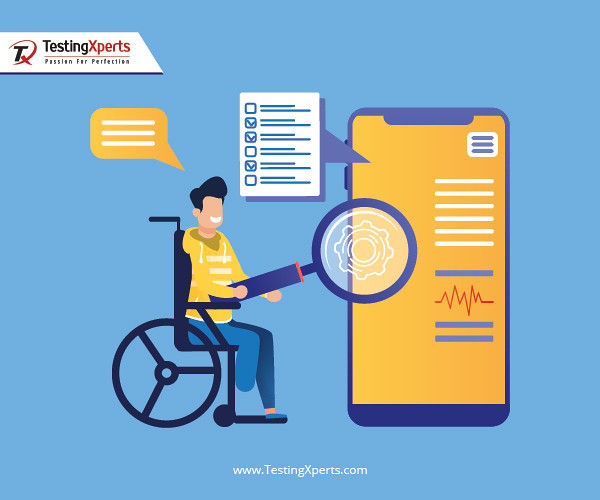What is the Automated Tool for Accessibility Testing?
The accessibility testing tool plays a key role in enhancing the effectiveness of accessibility testing and ensuring that the website or application is fully accessible, navigable and usable. The tools provide a technical platform that covers almost all the aspects of disabilities in order to build a disabled-friendly website or application. The accessibility of the software can be checked through the implementation of testing tools as mentioned below. In this article, you will get to know about a few important accessibility testing tools.
Following are the nine automation tools used for accessibility testing:
1. Color Contrast Analyzer: Text color contrast problems on a web
page are checked by Color Contrast Analyzer according to the text-color
contrast requirements mentioned in WCAG 2. The page is evaluated as it appears
on the browser so that advanced CSS attributes and text over gradients are
properly handled.
The entire web page, a portion of
the web page and the entire visible contents of a tab are properly analyzed.
2. Accessibility Developer Tools: The Accessibility Developer Tools (ADT) is a library of utility code and accessibility related testing. The key component of ADT is the accessibility audit. Accessibility testing is a scenario where common accessibility problems are checked by a collection of audit rules and an API is also used for running these rules on an HTML page.
For the purpose of carrying out automation, Audit API axs_testing.js is used. By using Phantom JS, you can also run it at the command line. In order to run selenium-based accessibility tests, testers can use ADT with Selenium WebDriver and Scala.
3. Wave: The Wave evaluation tool can be passed on to the specific
URL and it will let know what are the accessibility practices that are missing
or not optimized for, along with a summary of alerts and errors. Visual
feedback is provided about the accessibility of the web content, by inserting
indicators and icons into the page.
4. Pally: This specific tool has a bunch of tools through which the
accessibility tests can be automated. They have a browser-based dashboard,
command-line interface for monitoring various websites accessibility
simultaneously.
5. Protractor: This tool has an extensive Accessibility Plugin
through which a set of audits are run on your existing end-to-end tests and to
make sure that the site is free from obvious errors.
6. Tenon.io: It is an API-based automation tool through which accessibility
tests can be added to any automation framework that might be in use by the
team. In order to test against WCAG, tenon.io can also be used.
7. Ally machine: It is an automated accessibility testing tool through which detailed reports are produced by crawling and testing pages on any web application. The pages are validated against specific laws.
8. Web Accessibility Checker: If accessibility checks need to be
performed on any ASP.NET Web application, the Web Accessibility Checker can be
used. It supports all major international accessibility standards and is also
fully customizable.
9. UI Automation: Microsoft UI Automation is an accessibility testing framework through which Windows applications are enabled to consume and
provide programmatic information about User Interfaces (UIs).
Most UI elements on the desktop
are provided with programmatic access. Assistive technologies such as screen
readers are also enabled by UI Automation, so that information about the UI can
be provided to end-users. The UI can be manipulated by means other than
standard input. Automated test scripts are also allowed by UI Automation to
interact with the UI.
Conclusion: If you are looking forward to implementing
accessibility testing for your specific project, then do get connected with a
premium software testing services company that will provide you with a feasible
testing strategy that is in line with your project specific requirements.



Comments
Post a Comment